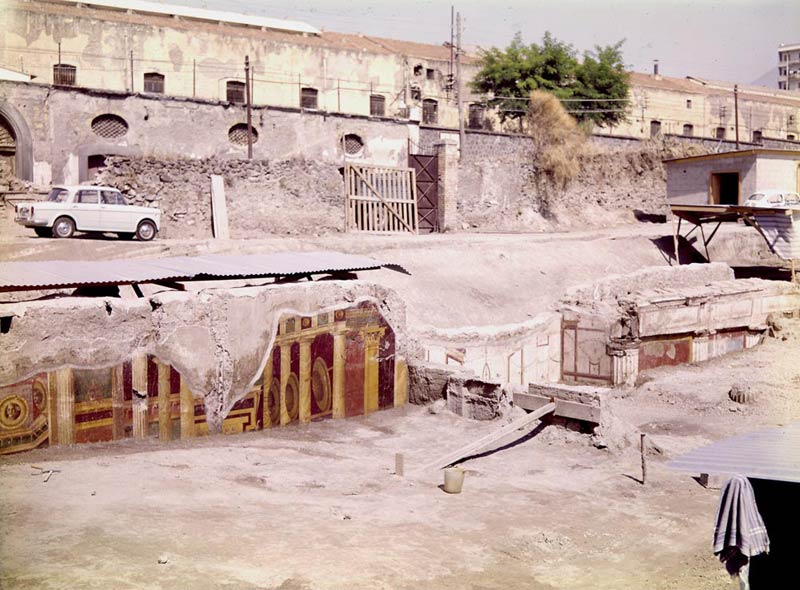Discovery and Reconstruction

Excavation of Villa A, August 1966
After the eruption of Mount Vesuvius in AD 79, Villa A was not seen again until the builders of a canal commissioned in 1592 cut across the villa’s south (seafront) façade. Apart from limited efforts to explore the villa by tunneling in 1785 and again in 1839–1840, no systematic archaeological work occurred until 1964, when a large-scale campaign of excavation and reconstruction was undertaken by Italian archaeologists. By 1968, with the discovery of superb Second Style paintings, it was clear that Villa A was an important luxury villa dating back to at least 50 BC. The Italian team re-erected fallen walls and reattached the fragments of wall paintings when their original locations could be determined. When funding for the project ran out, many painting fragments that had not found a place on the restored walls were stored in out-of-the-way rooms of the villa. In 2006 the Oplontis Project, a collaboration between the Archaeological Superintendency of Pompeii and the University of Texas at Austin, launched a major campaign to study and fully publish all of the archaeological evidence for Villa A.

